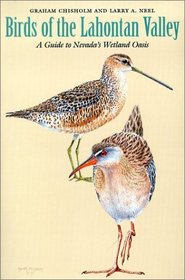Search -
Birds of the Lahontan Valley: A Guide to Nevada's Wetland Oasis
Birds of the Lahontan Valley A Guide to Nevada's Wetland Oasis
Author:
Deep in the arid vastness of the harsh Great Basin desert, in one of the warmest and driest basins in northern Nevada, lies a wetland oasis that is home to more than 290 species of resident and migratory birds. The Lahontan Valley wetlands, including Stillwater Marsh and Carson Lake, contain the remnants of a vast Pleistocene lake that once cove... more »
Author:
Deep in the arid vastness of the harsh Great Basin desert, in one of the warmest and driest basins in northern Nevada, lies a wetland oasis that is home to more than 290 species of resident and migratory birds. The Lahontan Valley wetlands, including Stillwater Marsh and Carson Lake, contain the remnants of a vast Pleistocene lake that once cove... more »
ISBN-13: 9780874174793
ISBN-10: 0874174791
Publication Date: 11/2001
Pages: 224
Rating: ?
ISBN-10: 0874174791
Publication Date: 11/2001
Pages: 224
Rating: ?
0 stars, based on 0 rating
Publisher: University of Nevada Press
Book Type: Paperback
Members Wishing: 0
Reviews: Amazon | Write a Review
Book Type: Paperback
Members Wishing: 0
Reviews: Amazon | Write a Review
Genres:
- Science & Math >> Biological Sciences >> Ecology
- Engineering & Transportation >> Professional Science >> Biological Sciences >> Ecology
- Outdoors & Nature >> Birdwatching >> General
- Outdoors & Nature >> Ecosystems >> Wetlands
- Outdoors & Nature >> Field Guides >> Birds




